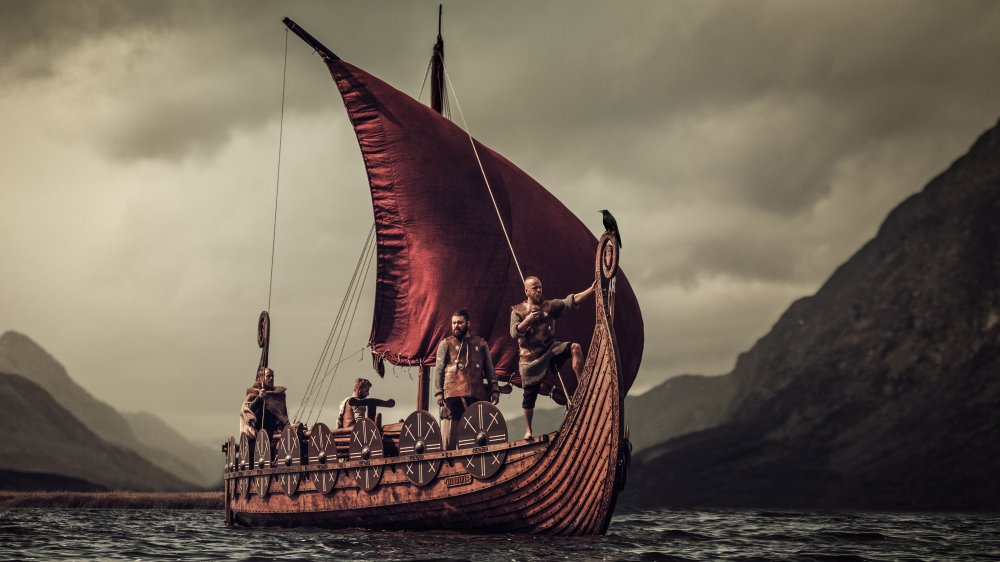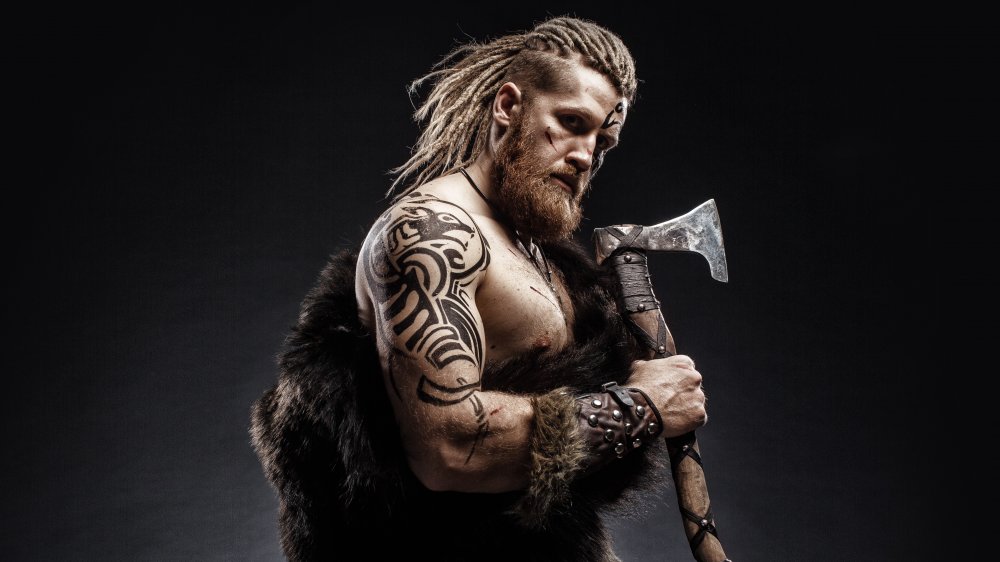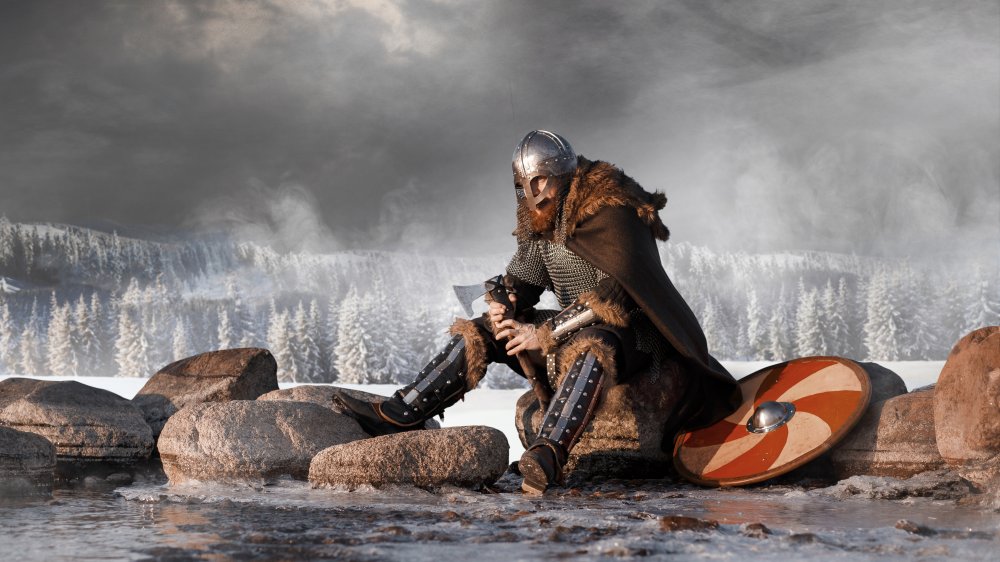Popular Myths About Vikings You Can Stop Believing
Get famous enough, and the legends start to pile up. In some ways, the legends are more important than the history — the legends turn into morality tales, or helpful guides for life. Be brave, like Davy Crockett (but he might have surrendered); oppose slavery, like Robert E. Lee (except he was just as cruel as any other slave owner in the pre-war South); learn how to sew flags, like Betsy Ross (that one's a maybe, at best). Sometimes the legends are just more entertaining than the facts.
The Vikings are no exception. Everybody knows what a Viking is, right? Big horned helmets, and lots of hair, and dragon-bedecked boats, raiding all of Western Europe while talking like The Muppets' Swedish Chef. Yes and no. One interpretation is that the word itself is a verb, "to go viking," meaning to voyage out — yes, to raid, but also to trade, as Live Science points out.
Maybe berserk, but excellent grooming habits
The Viking Era was relatively brief — around 800-1050 CE, and ranged from North America (archaeologists have unearthed a settlement in Nova Scotia) to Eastern Europe. And while all this seafaring and raiding was going on, they wore helmets, because that's what warriors did in those days, but no horns. None of the contemporary descriptions or depictions of Vikings include horns on the helmets, according to History. The one Viking helmet that's been found from that era is hornless. Where did the idea come from? Seems to date back to 19th Century artists, trying to add some oomph to their paintings. Wagner operas don't help, either, according to the BBC's History Extra.
As Mental Floss reports, Vikings didn't come from any one place, either, except in the most general sense of Scandinavia — today's Sweden, Norway, and Denmark. While martial prowess was admired and respected, they weren't all trained warriors; some of the raiders were ordinary guys who wanted to make some quick money.
It wasn't all raiding; sometimes it was commerce
Raiding a coastal village or a monastery wasn't necessarily high-risk work, especially when you look terrifying. Yes, there were berserkers, the warriors who would sort of slip into a murderous trance in battle. But they were by no means the rule in Viking society. Look terrifying? Yes. Smell terrifying? Not really — comparatively speaking, anyway. Unlike much (even most) of Western Europe in those days, Vikings actually bathed, regularly (meaning at least weekly), and groomed themselves. Excavations of the Viking settlement of Jorvik at what's now York, England, have revealed artifacts like combs and other personal care items.
The seafaring wasn't all raiding and bloody axes and whatnot. The Vikings also sailed distances to establish trading partners: The Vikings were also people of business. Sure, sometimes a nickname reflected the bloodthirsty mien of a raider — "Haldar the Unchristian" comes to mind — but then there's also "Ǫlvir the Friend of Children," because when he went a-raiding he refused to skewer youngsters on his spear, the way some of his colleagues were prone to do. Was he less esteemed than, say, Erik Bloodaxe? The bards are silent on that point.


